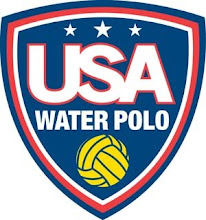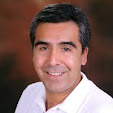 PoloMetrics and SwiMetrics objectively and immediately show and help educate athletes how they can move more efficiently and quickly through the water.
PoloMetrics and SwiMetrics objectively and immediately show and help educate athletes how they can move more efficiently and quickly through the water. PoloMetrics and SwiMetrics are used as a competitive advantage by the Olympic medalists, Olympic and world championship swimmers, Olympic triathletes, water polo players, masters swimmers, age-group swimmers and competitive triathletes.
 PoloMetrics and SwiMetrics are quick, real-time tests to measure, record and analyze the velocity, force and acceleration of athletes in the water.
PoloMetrics and SwiMetrics are quick, real-time tests to measure, record and analyze the velocity, force and acceleration of athletes in the water. Imagine a portable wind tunnel or flume with instant feedback. All it takes is a few minutes and can be used at any location.
 As one example, Dara Torres was tested. Could a four-time Olympian, a 41-year-old mother and former world record holder make a comeback? Could she medal?
As one example, Dara Torres was tested. Could a four-time Olympian, a 41-year-old mother and former world record holder make a comeback? Could she medal? Dara was tested at the US Olympic Training Center. She did a series of 20-meter swims to measure her swimming velocity that enabled her to discover her swimming inefficiencies.
After the most decorated and lengthy career as a national champion, Olympic medalist and NCAA champion, Dara discovered small flaws in her swimming technique that were identified, including a slight reduction in speed when she breathed to the left side versus when she breathed to the right.
As a result and as a commitment to her interests in making herself faster and gaining precise speed that she would later use at the 2008 Beijing Olympics, Dara started breathing only to the right despite the fact that she had been a bilateral breather all her life. The outcome is well-known: Dara did her personal bests at the age of 41, made the Olympic team and won three silver medals at the 2008 Beijing Olympics to become one the world’s most heralded athletes of 2008.
 The PoloMetrics and SwiMetrics equipment includes a portable machine that is placed at the edge of a pool with proprietary software.
The PoloMetrics and SwiMetrics equipment includes a portable machine that is placed at the edge of a pool with proprietary software. It measures and records the velocity (speed in meters per second) with a fishing line tied to the athlete’s waist. The athlete can be tested doing regular swimming (of any stroke), pushing off the wall doing turns, eggbeater for water polo (i.e., tests in the vertical or lateral direction), shooting the ball for water polo, sighting for open water swimming, navigating in the open water by testing the relative velocity of the left arm vs. the right arm, dribbling with a water polo ball or triathlon wetsuit comparison tests.
The test results are then superimposed on an underwater video for an easy-to-understand teaching tool.
 In a PoloMetrics test of USA Water Polo junior national water polo players, one of the best players has three points of acceleration.
In a PoloMetrics test of USA Water Polo junior national water polo players, one of the best players has three points of acceleration. Her maximum eggbeater height was 42.36 cm which was reached in 0.767 seconds with a maximum eggbeater velocity of 0.923 meters per second. Her eggbeater abilities were compared against other athletes.
The analysis showed that she can eggbeater higher if she squeezes her legs inside and keep them straight at the end of eggbeater. By bending her knees before reaching the peak, she reduces her vertical height.
 7-time Olympic medalist Jason Lezak, who is a real student of generating power, increasing efficiency in the water and decreasing resistance in his stroke, said. "...the [SwiMetrics] underwater video analysis with the velocity curve showed me how I could improve my stroke through the weaker points where my velocity significantly dropped."
7-time Olympic medalist Jason Lezak, who is a real student of generating power, increasing efficiency in the water and decreasing resistance in his stroke, said. "...the [SwiMetrics] underwater video analysis with the velocity curve showed me how I could improve my stroke through the weaker points where my velocity significantly dropped." Olympian Chloe Sutton, the multi-time national champion in both the pool and open water, has been tested numerous times. Each time, she focuses on something new and incrementally refines her stroke.
Olympian Chloe Sutton, the multi-time national champion in both the pool and open water, has been tested numerous times. Each time, she focuses on something new and incrementally refines her stroke."Being able to adjust my stroke based on scientific fact was just what I needed. It is amazing that a slight change in position could keep my velocity from lagging. With the video and the science working together it was so obvious what I needed to do - right on the monitor."
Ahelee Sue Osborn, a multi-time national masters champion and English Channel swimmer from Irvine's NOVA Masters Swimming, was tested. In her SwiMetrics video below, when the white line goes up, she is accelerating (moving through the water faster). Conversely, when the white line goes down, she is decelerating - or literally slowing down in the water - something that often cannot be caught by the human eye even with an underwater camera.
If the white line reaches zero, the athlete has literally and figuratively come to a dead stop at that moment in time - which is quite common in breaststroke, butterfly and off the wall in breaststroke turns. The key is for the athlete and coach to understand why the swimmer is either accelerating or decelerating at different times in the stroke.
The vertical green line in the middle of the graph indicates Ahelee's position in the video. Her real-time velocity data at every point in the swimming cycle is represented by a "Velocity Curve" (the continuous white line shown below her in the video).
She was tested in a variety of 20-yard race-pace swims done at various speeds (e.g., race pace for a 200-meter freestyle and open water swimming pace) to capture her strengths and weaknesses in the different styles of swimming in her repertoire.
Based on this data and knowledge, coaches and water polo players can do various drills in the water and on land to help them focus on their technique as they tweek their stroke and eggbeater based on an objective fundamental understanding of their strengths and weaknesses.
The posting below show other athletes.
Copyright © 2009 by Steven Munatones

